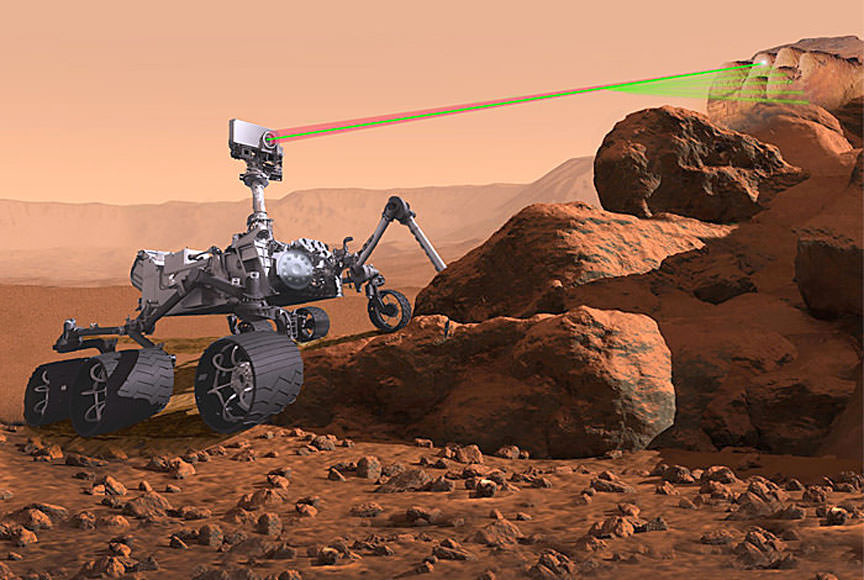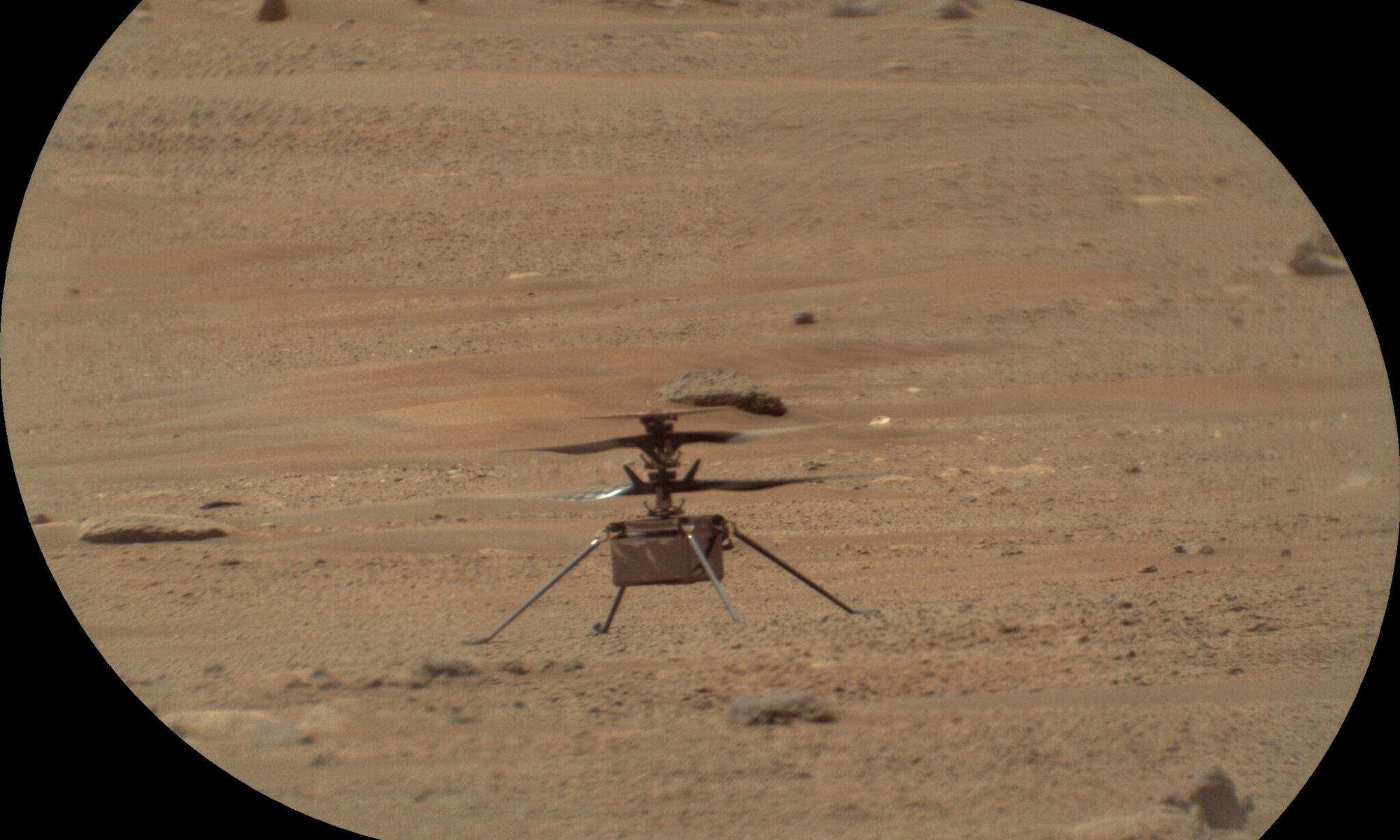NASA’s Ingenuity helicopter is a stunning achievement of engineering, design, and, well, ingenuity. The dual-rotor craft can be seen taking off and landing in this remarkable video, taken by the Mastcam-Z, an imager aboard the Perseverance Mars Rover. Mastcam-Z is a tremendous scientific instrument, but this article’s truly outstanding lead image was taken with Perseverance’s SuperCam instrument.
Continue reading “Long-Range Photo of Ingenuity Taken by Perseverance’s SuperCam Instrument”Here’s a Strange Rock That Perseverance Shot With its Laser
Perseverance has been busy lately. After testing its systems out, taking the first sound recording ever on the Red Planet, and dropping off its helicopter sidekick, now it has the opportunity to work on its primary mission: stare at some rocks. And occasionally zap them with a laser.
Continue reading “Here’s a Strange Rock That Perseverance Shot With its Laser”More Audio from Perseverance: the Crunch of its Wheels on the Martian Regolith

In absence of (yet) being able to step foot on Mars, we have robotic vicarious experiences through our rovers including Perseverance which landed this past February 18th. In addition to photos we’ve collected from the surface over the decades, our ever-improving data connection to Mars made it possible to see video from Perseverance’s landing. That dramatic unfurl of the parachute and dust spray of the landing thrusters – astonishing! I’m not ashamed to admit I cried. Through Perseverance we’re also experiencing Mars exploration with another sense – SOUND! Sound from another planet!! Using Perseverance’s Entry, Descent, and Landing Microphone (EDL Mic) we recently recorded audio of Perseverance’s wheels rolling across the Martian regolith (broken rocks and dust or “soil”). The audio segment below is an edited portion of sound highlights from a longer 16 minute raw audio file.
C. NASA/JPL-Caltech
Since Perseverance is Searching for Life, What Will it Be Looking for?

You have to be careful what you say to people. When NASA or someone else says that the Perseverance rover will be looking for fossil evidence of ancient life, the uninformed may guffaw loudly. Or worse, they may think that scientists are looking for actual animal skeletons or something.
Of course, that’s not the case.
So what is Perseverance looking for?
Continue reading “Since Perseverance is Searching for Life, What Will it Be Looking for?”Mars 2020 Will be The Third Time That NASA Has Tried to Send a Microphone to Mars

This summer, between mid-July and early August, the Mars 2020 rover will launch, reaching Mars by February of 2021. Once it touched down in the Jezero Crater, it will carry on in the footsteps of its predecessor – the Curiosity rover. This will include searching for evidence of Mars’ past habitability and the possible existence of life (past and present), as well as a sample-return mission.
To accomplish these tasks, the Mars 2020 rover will be relying on an advanced suite of instruments. One of these is the SuperCam, which includes a camera, a laser, and spectrometers and is mounted to the rover’s mast (or “head”). Once operational, this instrument will be used to study the chemistry and mineralogy of Martian rocks and (with any luck) find evidence of fossilized microbial life on Mars.
Continue reading “Mars 2020 Will be The Third Time That NASA Has Tried to Send a Microphone to Mars”

